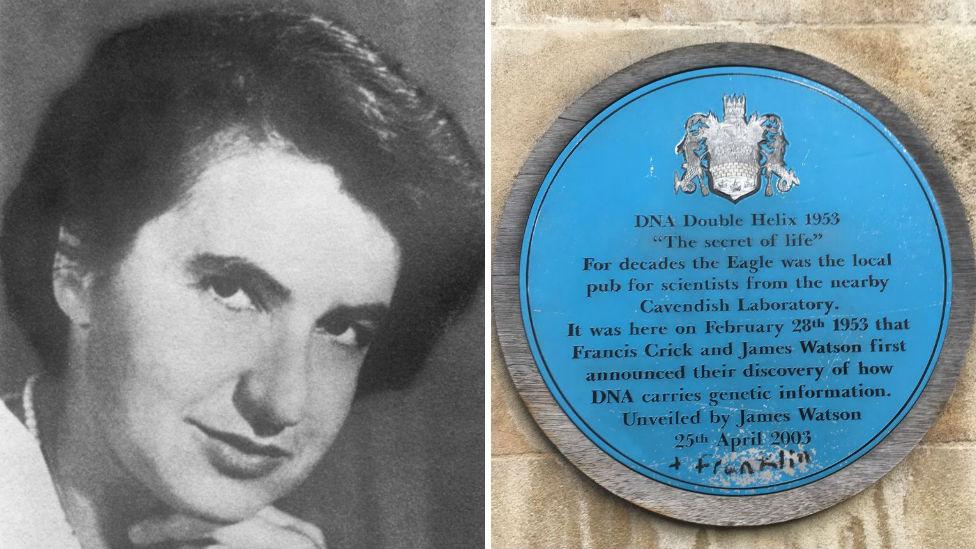'DNA discovery' historic pub to be revamped
- Published
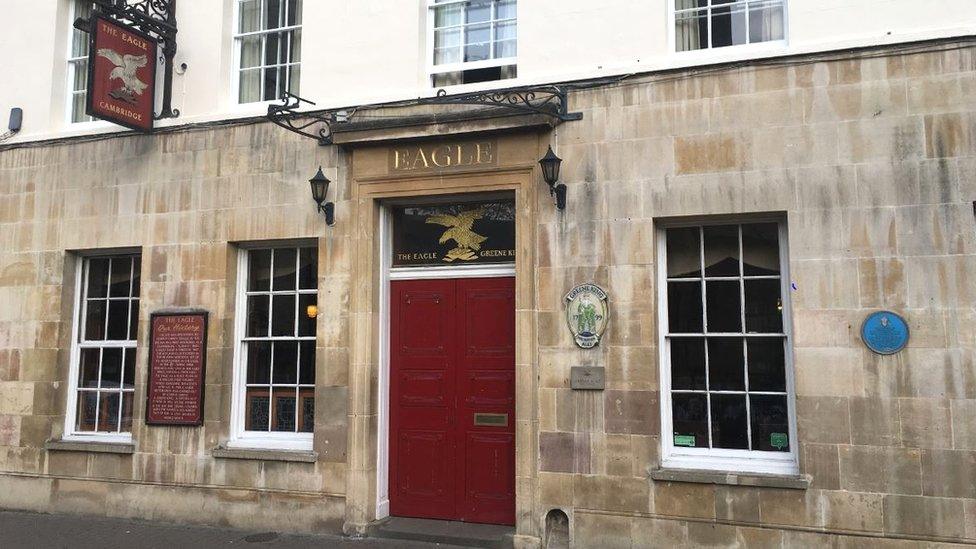
The pub was a regular haunt of scientists working at the University of Cambridge
The historic pub where scientists first announced they had discovered the structure of DNA is set to be revamped.
In February 1953, a jubilant Francis Crick walked into The Eagle in Cambridge and proclaimed he and James Watson had "found the secret of life".
The Grade II-listed pub also contains a ceiling covered in the signatures of Allied pilots during World War Two.
Owner Greene King said the "minor" works would help preserve the building "for generations to come".
Cambridge City Council has approved the plans, which include the refurbishment of some of the Bene't Street pub's flooring and roofing and a full refit of the basement toilets.
A new "bulkhead" to contain down lights will be added to the "RAF Bar" ceiling, into which the airmen burned their names using cigarette lighters.
Some joinery in the pub will be altered and counter-tops will be revamped.
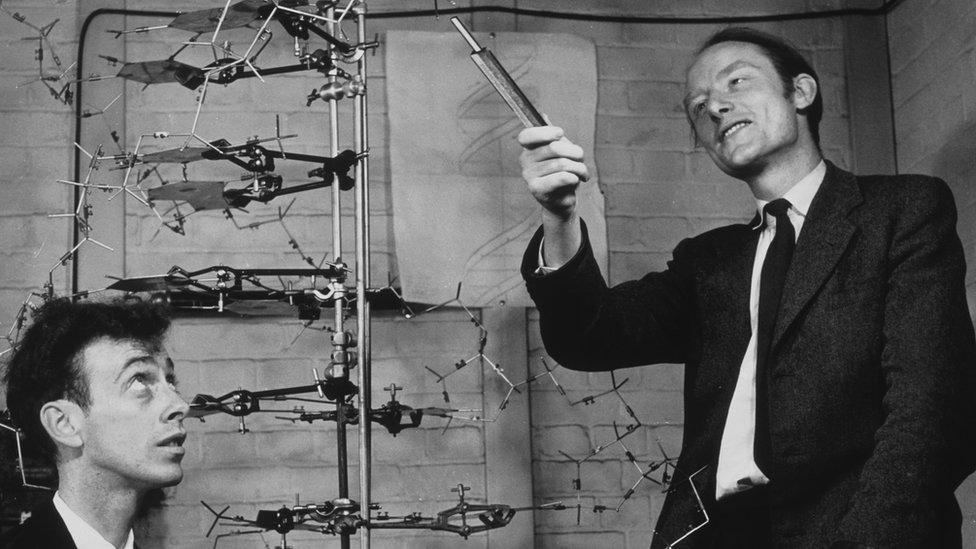
James Watson (left) and Francis Crick worked at the nearby Cavendish Laboratory
The application, external said The Eagle needed "refurbishments and repairs in order to improve its services".
It states that works "will not harm the historic fabric or be detrimental to the conservation area".
The pub, which opened in the 17th Century and was originally called The Eagle and Child, was a regular haunt for RAF servicemen in World War Two.
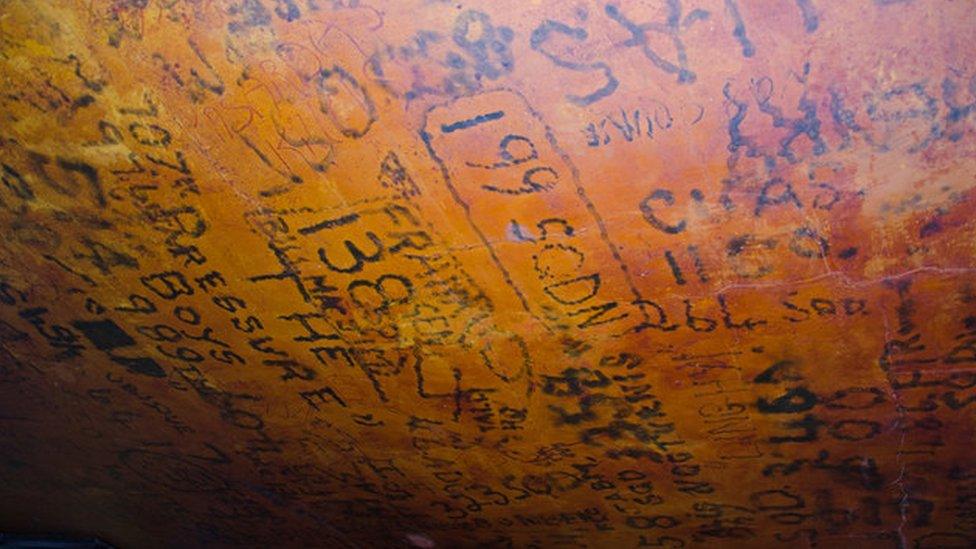
Allied servicemen wrote on the ceiling in The Eagle's "RAF Bar" during World War Two

The Eagle needs "refurbishments and repairs in order to improve its services", according to a planning application
It was also the "local" for scientists such as Crick and Watson, working at the University of Cambridge's Cavendish Laboratory.
The pair discovered how DNA (deoxyribonucleic acid) carries genetic information.
A blue plaque at the pub marks their discovery, made possible because of the contribution of Rosalind Franklin and Maurice Wilkins, who were studying DNA using X-rays.
In 1962 Crick and Watson, along with Wilkins, received the Nobel Prize in Physiology or Medicine for their discovery. Franklin had died four years earlier.
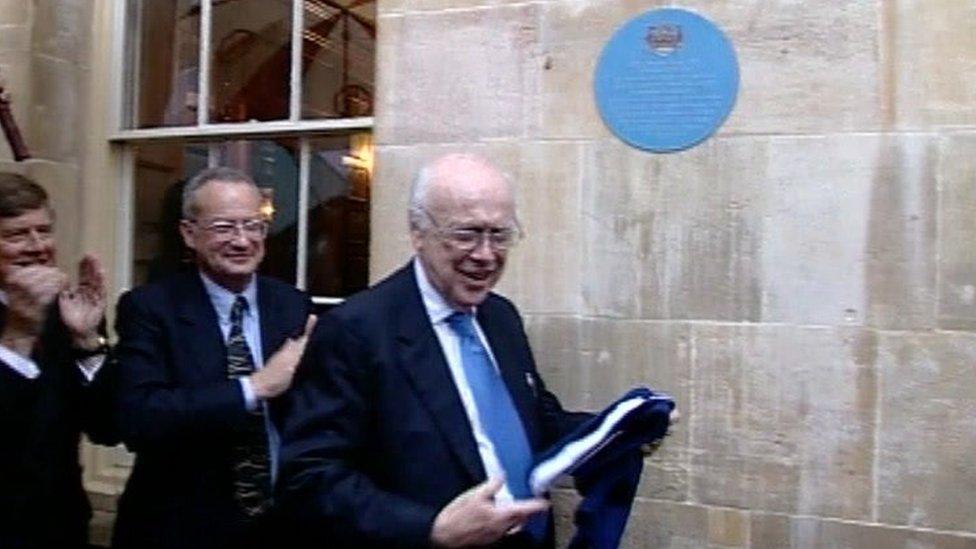
James Watson (right) returned to Cambridge in 2003 and unveiled the plaque on the 50th anniversary of his DNA discovery
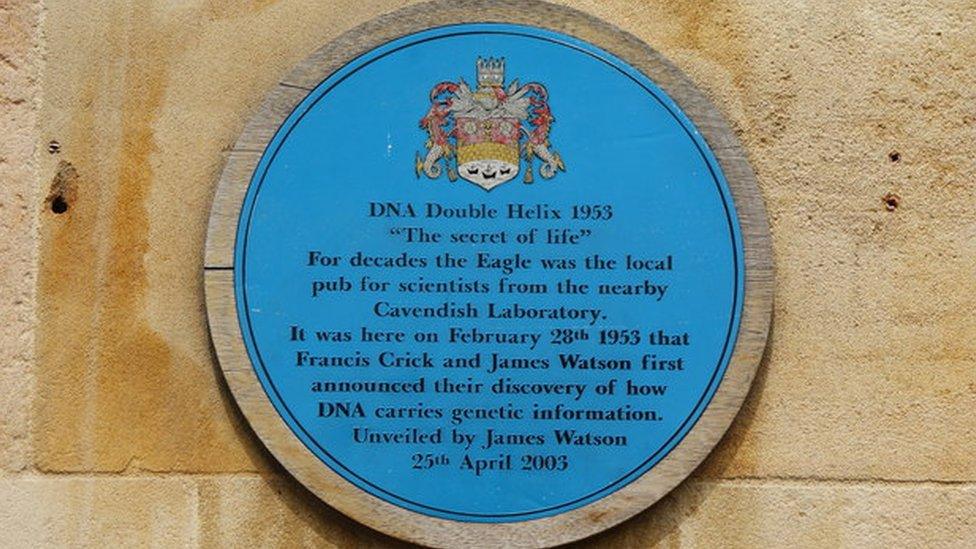
- Published10 October 2017
